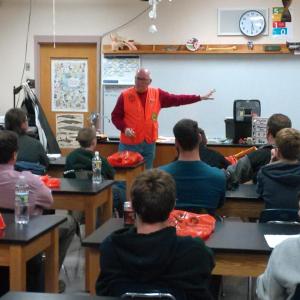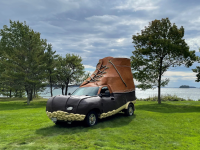From ticks to chronic wasting disease, Maine hunter safety covers many topics
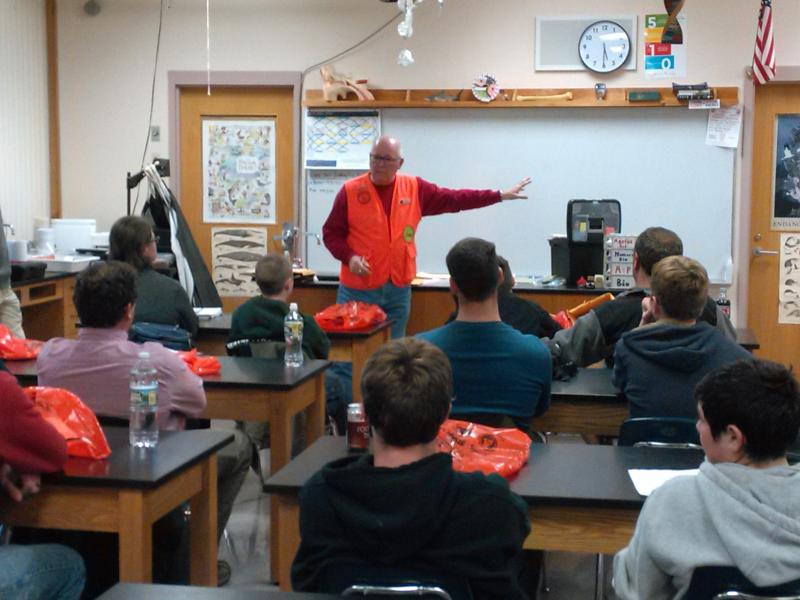 Chief instructor Glenn Riker conducts the IF&W firearms hunter safety class held Oct. 18 and 25 by Boothbay Adult Education at Boothbay Region High School. JANE CARPENTER/Boothbay Register
Chief instructor Glenn Riker conducts the IF&W firearms hunter safety class held Oct. 18 and 25 by Boothbay Adult Education at Boothbay Region High School. JANE CARPENTER/Boothbay Register
 Reggie Read, recreational safety coordinator with IF&W for Lincoln and Sagadahoc counties. JANE CARPENTER/Boothbay Register
Reggie Read, recreational safety coordinator with IF&W for Lincoln and Sagadahoc counties. JANE CARPENTER/Boothbay Register
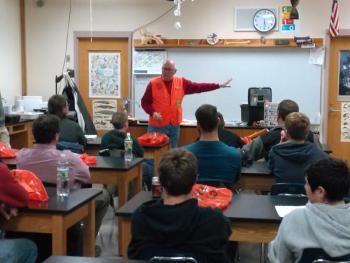 Chief instructor Glenn Riker conducts the IF&W firearms hunter safety class held Oct. 18 and 25 by Boothbay Adult Education at Boothbay Region High School. JANE CARPENTER/Boothbay Register
Chief instructor Glenn Riker conducts the IF&W firearms hunter safety class held Oct. 18 and 25 by Boothbay Adult Education at Boothbay Region High School. JANE CARPENTER/Boothbay Register
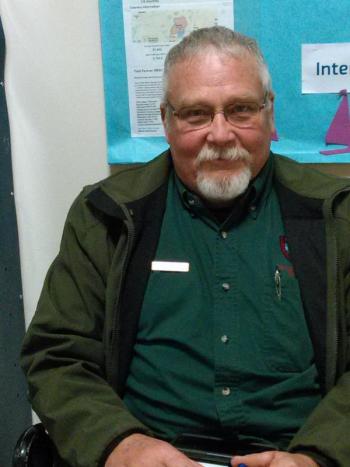 Reggie Read, recreational safety coordinator with IF&W for Lincoln and Sagadahoc counties. JANE CARPENTER/Boothbay Register
Reggie Read, recreational safety coordinator with IF&W for Lincoln and Sagadahoc counties. JANE CARPENTER/Boothbay Register
There is significantly more to hunting in Maine than firing a gun. On Oct. 18 and 25, a class of future hunters attended the final two sessions of a firearms hunter safety course offered by the region’s adult education office.
The course is one of several the Maine Department of Inland Fisheries and Wildlife has been conducting throughout the state. The classes at Boothbay Region High School were the culmination of a free seven-hour online course the state provided.
According to Michael Sawyer, recreational safety and vehicle coordinator for IF&W, the National Rifle Association offered hunter safety courses in clubs in the 1950s. IF&W became involved in overseeing these courses around 1971. State-mandated hunter education began in 1986.
The online course is required for hunters to get a Maine hunting license unless they have been issued a license previously. Reggie Read, recreational safety coordinator with IF&W for Lincoln and Sagadahoc counties, praised the work of more than 600 volunteer instructors who assist with the classes each year.
“They give their time for hunter safety,” he said. “Without their support, participation and dedication our programs would not exist.” Volunteers for the Boothbay adult education class were chief instructor Glenn Riker of Chamberlain, David Delong of Round Pond and Rich Langton of Edgecomb.
Safety is the primary concern for the courses and the IF&W program has the numbers to prove it is working. The decrease in hunting fatalities is dramatic since the courses became mandatory, from a high of 19 fatalities in 1952 to none from 2013 to 2016.
Fourteen students attended the safety course at the high school. Two were under 18 and one class member was female. Read said women now make up one third of the students in hunter safety classes.
During the two sessions, students had to demonstrate the proper handling of firearms and familiarity with various types including pump, bolt, break, semi-auto and lever. Crossing obstacles, hunting with others, and use of a map and compass are also covered.
Hunting laws are included and students must know ethics and proper etiquette to access land. They must also show a prepared survival kit and pass a final exam. Invasive plants and species are also covered.
The federal Pittman-Robertson Wildlife Restoration Act of 1937 makes the classes possible through taxes on the sales of ammunition, firearms, bows and arrows. These taxes raised $761.6 million in 2017 and are distributed to the states to fund wildlife restoration, hunter safety and education programs.
Event Date
Address
United States

